#BLM = BUREAU of Land management
Explore tagged Tumblr posts
Text

#IFTTT#Flickr#sandstone#rock#formations#coyote#buttes#arizona#bureau#land#management#blm#united#states#usa#the#wave#red#american#southwest#travel#landscape#nature#photography#nikon#d850#dslr#digital#camera#nikkor
55 notes
·
View notes
Text
Trump has nominated a longtime oil and gas industry representative to oversee an agency that manages a quarter-billion acres of public land concentrated in western states.
Kathleen Sgamma, president of the Colorado-based oil industry trade group Western Energy Alliance, was named Bureau of Land Management director, a position with wide influence over lands used for energy production, grazing, recreation and other purposes. An MIT graduate, Sgamma has been a leading voice for the fossil fuel industry, calling for fewer drilling restrictions on public lands that produce about 10% of US oil and gas.
If confirmed by the Senate, she would be a key architect of Trump’s “drill, baby, drill” agenda alongside the interior secretary Doug Burgum, who leads the newly formed National Energy Council that Trump says will establish US “energy dominance” around the world. Trump has vowed to boost US oil and gas drilling and move away from Joe Biden’s focus on the climate crisis.
The former interior secretary David Bernhardt relocated the land bureau’s headquarters to Colorado during Trump’s first term, leading to a spike in employee resignations. The bureau went four years under Trump without a confirmed director.
The headquarters for the 10,000-person agency was moved back to Washington DC under Biden, who installed the Montana conservationist Tracy Stone-Manning at the bureau to lead his administration’s efforts to curb oil and gas production in the name of fighting the climate crisis.
Sgamma will be charged with reversing those policies, by putting into effect a series of orders issued last week by Burgum as part of Trump’s plan to sharply expand fossil fuel production.
Sgamma said on social media she was honored to be nominated.
She said she greatly respects the agency’s work to balance multiple uses for public lands – including energy, recreation, grazing and mining — with stewardship of the land. “I look forward to leading an agency that is key to the agenda of unleashing American energy while protecting the environment,” she wrote on LinkedIn.
But environmentalists warned that Sgamma would elevate corporate interests over protections for public land. “Kathleen Sgamma would be an unmitigated disaster for our public lands,” said Taylor McKinnon at the Center for Biological Diversity, adding that Sgamma has “breathtaking disdain for environmental laws, endangered species, recreation, or anything other than industry profit”.
Trump nominated Brian Nesvik to lead the US Fish and Wildlife Service, which also is under the interior department and helps recover imperiled species and protect their habitat.
Nesvik until last year led the Wyoming game and fish department, where he pushed to remove federal protections for grizzly bears. That would open the door to public hunting for the first time in decades after the animals bounced back from near-extinction last century in the northern US Rocky Mountains.
The Biden administration in its last days extended protections for more than 2,000 grizzly bears in and around Yellowstone and Glacier national parks, a move that was blasted by Republican officials in Wyoming, Idaho and Montana.
#bureau of land management#extractive industries#fossil fuels#fish and wildlife#conservation#brian nesvik#kathleen sgamma#us fish and wildlife service#blm#excerpts
20 notes
·
View notes
Text

A single engine airtanker scoops water and provides support to wildland firefighters on the Brock Road Fire in Alaska.
Photo by Rebecca Manbeck, BLM
#Air Tractor 802F Fire Boss#Air Tractor#BLM#bureau of land management#fire#aerial fire#Department of the Interior#DOI#airplane#plane
5 notes
·
View notes
Text
Another person who has been on my hate list for years, but now her ranking in that list has been significantly elevated. She is morally defective.
Excerpt from this New York Times story:
President Trump has nominated Kathleen Sgamma, a professional advocate for the oil and gas industry, to run the Bureau of Land Management, an agency within the Interior Department that oversees grazing, logging, drilling and wildlife conservation on 245 million acres of public land.
The nomination was received by the Senate on Tuesday and referred to its Committee on Energy and Natural Resources. The committee has not yet scheduled a confirmation hearing for Ms. Sgamma.
Ms. Sgamma is president of the Denver-based Western Energy Alliance, where she has worked for nearly 20 years on behalf of independent oil and gas companies that have sought to strip away government protections and rules on extracting fossil fuels on public lands in Western states.
Her nomination aligns with Mr. Trump’s vision for the Interior Department as a government tool to achieve “energy dominance” by aggressively promoting the extraction of the nation’s oil and gas resources.
In an email to The Times last week, Ms. Sgamma wrote, “We’re pleased that the interior secretary’s orders were so comprehensive and detailed, but they’re just the start of a lot of work to roll back the anti-oil-and-gas policies of the Biden administration.”
The selection of Ms. Sgamma to run the Bureau of Land Management is a 180-degree turn from her predecessor, Tracy Stone-Manning, who sought to enact former President Joseph R. Biden Jr.’s “all-of-government” approach to fighting climate change by opening up public lands to wind and solar development while limiting oil and gas drilling. Ms. Stone-Manning, who had worked as an environmental policy adviser to Congressional Democrats and at an environmental advocacy group, also worked with anti-logging activists in her early 20s and was criticized as an “eco-terrorist” by Senate Republicans.
6 notes
·
View notes
Text
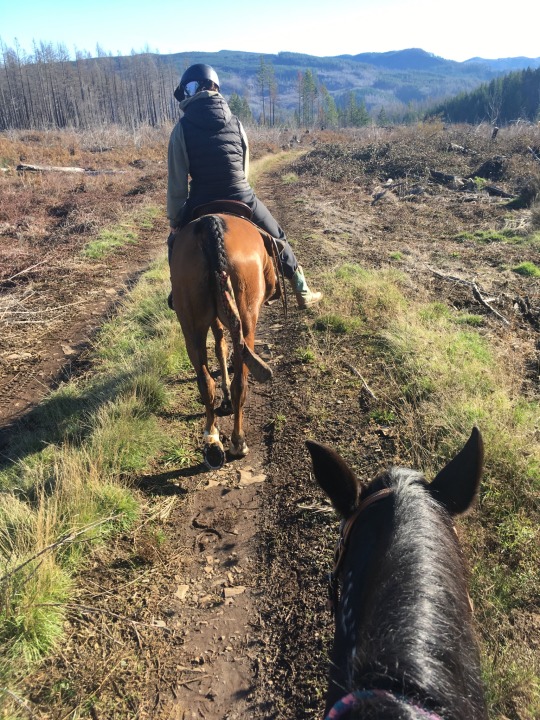
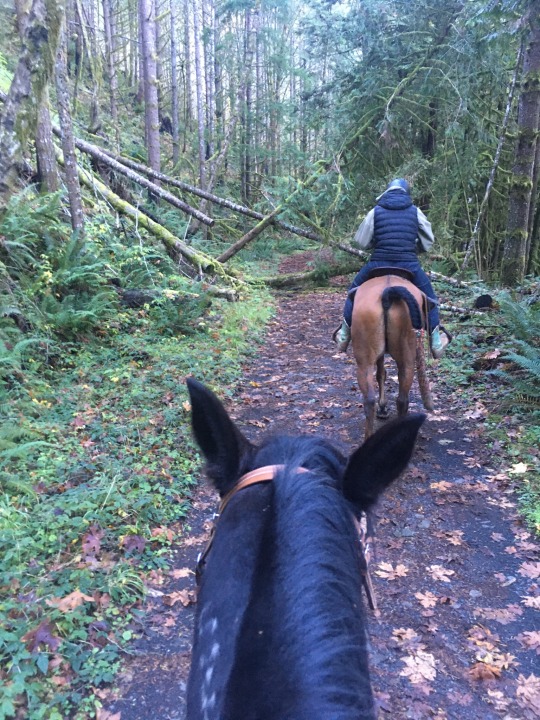
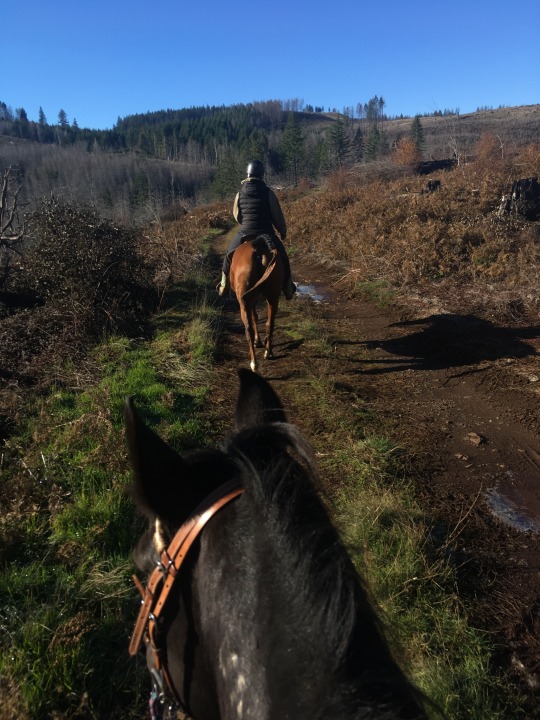
This weekend I got to take Thea out riding in a BLM timber preserve - almost nine miles with lots of uphill gallops, several log jumps, and one slide on her butt down a very steep muddy hill. She worked hard enough to sweat on her face, and loved every second of it. She kept pace with the Arab better this time
#blm mustang#mustang horse#horse#thea#equestrian#horseblr#bureau of land management#timber#number 105 was a ride in the corridor! almost nine miles
31 notes
·
View notes
Text
This New Park Gives Different Views of the Grand Canyon—with No Crowds
These sacred Indigenous lands in Arizona just got government protection. Here’s how to explore their hikes, wildlife, and impressive vistas.
— By Joe Yogerst | September 1, 2023

Red Butte, which the Havasupai people call Wii'i Gdwiisa (“Clenched Fist Mountain”), is one of many sacred Indigenous sites within Arizona’s new Baaj Nwaavjo I’tah Kukveni Grand Canyon National Monument. Named a national monument by President Joseph Biden in August 2023, the one-million-acre wilderness offers hiking, backcountry camping, and views of the Grand Canyon without the crowds. Photograph By Taylor McKinnon, Center For Biological Diversity
Grand Canyon National Park draws 4.7 million visitors a year to the northwest corner of Arizona to hike, camp, or watch wildlife. But most of them don’t realize that the lands within and surrounding the park are sacred to the region’s 12 Indigenous tribes, which include the Havasupai, Hopi, Navajo, and several bands of Paiute.
That changed on August 8 when President Joseph Biden signed a decree creating the Baaj Nwaavjo I’tah Kukveni—Ancestral Footprints of the Grand Canyon National Monument. Sprawling across more than 960,000 acres directly north and south of the national park, the new monument offers more rugged, less crowded recreation than its neighbor. It also provides a view of the landscape through Indigenous eyes.
“Baaj nwaavjo in Havasupai means ‘where the ancient people roamed,’” says Carletta Tilousi, coordinator of the Grand Canyon Tribal Coalition. “I’tah kukveni is the Hopi translation of ‘ancestral footsteps’. This reaffirms their creation stories.”
Here’s how the monument came to be, and how to explore it.
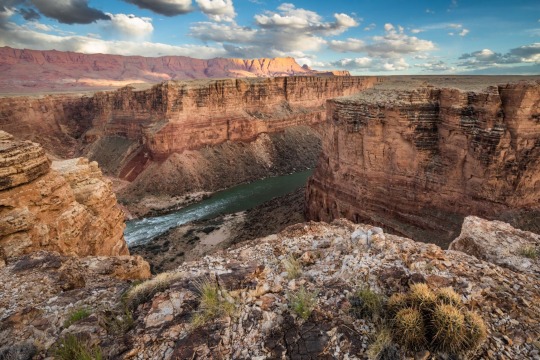
Baaj Nwaavjo I’tah Kukveni yields views of the Colorado River and Grand Canyon from a different perspective. Photograph By Amy S. Martin
How to Make a National Monument
It took two million years for the Grand Canyon itself to form and around 40 years for Baaj Nwaavjo I’tah Kukveni to become reality. “The protection for these lands is something the tribes have focused on since as far back as the 1980s,” says Amber Reimondo of the Grand Canyon Trust, a nonprofit devoted to preserving the region.
Many of these Indigenous people were expelled from their territory when Grand Canyon National Park was established in 1919. They campaigned for decades to receive stronger protection for their lands around the park, overcoming entities that wanted fewer legal obstacles to development and mining. After President Biden’s election in 2020, the 12 tribes formed a coalition which led to the lands receiving federal status.
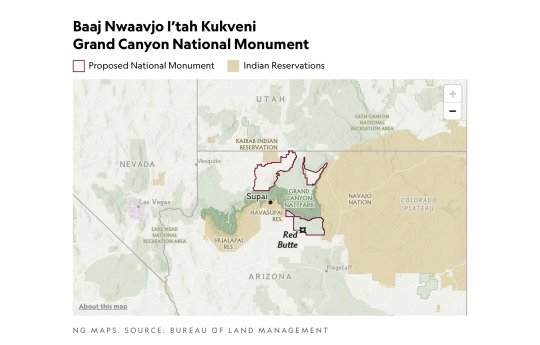
Though the National Park Service oversees Grand Canyon National Park, monuments such as Baaj Nwaavjo I’tah Kukveni are run by the U.S. Forest Service (USFS) and the Bureau of Land Management (BLM). Monuments generally have fewer restrictions regarding their use (e.g., sometimes hunting or logging is allowed), as well as fewer facilities for visitors.
Fewer Amenities, Fewer Crowds
Like many national monuments, Baaj Nwaavjo I’tah Kukveni exudes raw nature. It has no bathrooms or visitor center; access is primarily via dirt roads or rough trails; you’ll need a four-wheel-drive to reach many sections of the park.
What it offers is solitude and peace amid the forests and grasslands of northern Arizona. You can gaze at the Grand Canyon without thousands of other people jostling for the same space, hike trails where yours are the only footsteps, and make camp at secluded spots. Plus you might encounter wildlife such as elk, black bear, mule deer, birds, or bison.
That solitude is also important to the Indigenous people. Tilousi says that when she visits the busy South Rim inside Grand Canyon National Park, “It’s very difficult for me to find a spot where I can offer prayers and offerings in a quiet way.” She feels that won’t be an issue in the off-the-beaten-track lands of the new monument.

Native plants including yucca flourish within Baaj Nwaavjo I'teh Kukveni National Monument. Photograph By Amy S. Martin
Exploring the Monument
The vast wilderness of Baaj Nwaavjo I’tah Kukveni is divided into three distinct sections or parcels, each with its own appeal.
The southernmost section, the Tusayan Ranger District/South Parcel, is the easiest to explore. Comprising 330,000 acres within the Kaibab National Forest, its pine woodlands and sagebrush prairie are accessible via Forest Service roads or Sections 35 through 37 of the Arizona Trail, an 800-mile hiking route stretching across the entire state.
The South Parcel also shows signs of human life, including the rusty hangar of the 1920s Red Butte Airfield and the 80-foot-tall Grandview Lookout Tower, which you can climb for views of the Colorado Plateau and the Grand Canyon.
The other sections of the monument, Kanab Plateau/Northwest Parcel and Rock House Valley/Northeast Parcel, are located beyond the North Rim section of Grand Canyon National Park.
“It's a big, remote wilderness,” says Michael Cravens, advocacy and conservation director of the Arizona Wildlife Federation. “I’ve never in my life been somewhere with night skies that spectacular.” But he cautions visitors “to be careful and prepared” for the extreme weather and topography. You can reach the northern parcels on BLM roads south of U.S. Highway 89A.

The vast House Rock Valley stretches through a portion of the new national monument. Photograph By Taylor McKinnon, Center For Biological Diversity
Stretched across the Kanab Plateau and Antelope Valley, the Kanab Plateau section has hiking routes through spectacular side canyons and to panoramic views such as Gunsight Point.
The Hack Trail drops down into the Kanab Creek Wilderness with its enormous red-rock canyons, a landscape almost as impressive as the Grand Canyon itself. Experienced hikers can continue down Kanab Creek to the Colorado River or along other trails to vertiginous overlooks along the North Rim.
Set beneath the Vermilion Cliffs National Monument, the Rock House Valley section of Baaj Nwaavjo I’tah Kukveni tumbles across sagebrush flats to the edge of Marble Canyon. Rugged hiking trails here include the Soap Creek Trail, which winds down from the Rapids/Badger Camp Overlook to a primitive campsite near the river.
Rough roads lead south to viewpoints for Rider Canyon, South Canyon, and other offshoots of the Grand Canyon. Here, you might even spot the North Rim’s resident bison herd, brought to the Arizona Strip in 1906 by Charles “Buffalo” Jones as part of efforts to save the species.
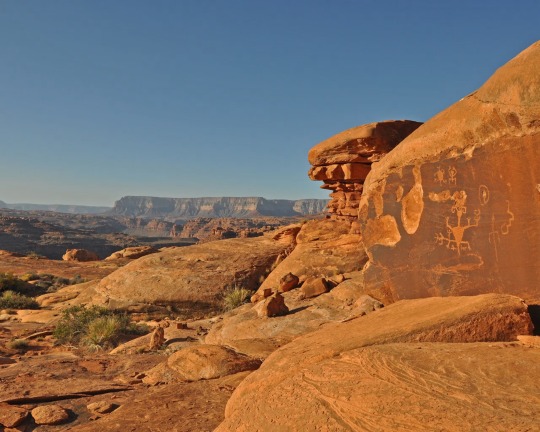
Ancient rock art can be spotted in the Kanab Creek Wilderness portion of Baaj Nwaavjo I’tah Kukveni National Monument. Photograph By Natpar Collection, Alamy Stock Photo

The Havasupai Indian Reservation in Arizona, which includes the Havasu Waterfall—part of the Havasupai Falls—is the current home of the Havasupai people. After the Grand Canyon became a national park, they were forcibly removed from their traditional homelands in the canyon and in nearby lands that will be part of the new national monument. Photograph By Mike Theiss National Geographic Image Collection
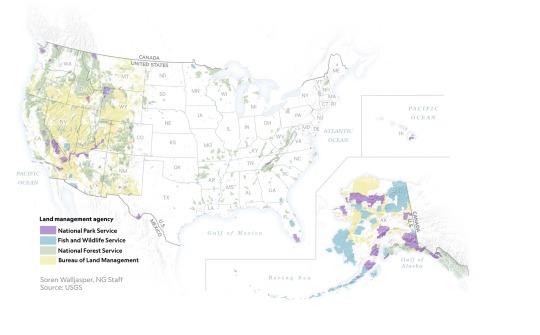
1 Million Acres of ‘Sacred’ Land Near Grand Canyon are Receiving New Protections! The designation of the land as a national monument, confirmed to National Geographic this week by the White House, will prevent new uranium mines and protect historically significant tribal lands.
#United States 🇺🇸 National Parks#New Park#Grand Canyan#Indigenous Lands#Arizona#Wildlife#Red Butte | Clenched Fist Mountain#Arizona | Baaj Nwaavjo I’tah Kukveni Grand Canyon National Monument#Center For Biological Diversity#President Joe Biden#Carletta Tilousi | Coordinator | Grand Canyon Tribal Coalition#Ancestral Footprints#Colorado River#Amber Reimondo | Grand Canyon Trust | Non-profit | Region Preservation#National Park Service#U.S. Forest Service (USFS) | The Bureau of Land Management (BLM).#Wildlife | Elk | Black Bear 🐻 | Mule | Deer 🦌 | Birds 🦅 | Bison 🦬#Hike Trails#Off-The-Beaten-Track Lands#Tusayan Ranger District | South Parcel#Kaibab National Forest 🌳#Colorado Plateau#Kanab Plateau/Northwest Parcel | Rock House Valley/Northeast Parcel#U.S. Highway 89A#Michael Cravens | Arizona Wildlife Federation#Kanab Plateau | Antelope Valley#Gunsight Point#Hack Trail#Vermilion Cliffs National Monument#Rock House Valley
3 notes
·
View notes
Text
OUR PUBLIC LANDS ARE NOT FOR SALE
Protect our national parks, monuments, public lands, and the people who preserve + maintain these sacred spaces. ❤️
Make your voice heard. Prefilled forms here:
Protect Our National Monuments From Oil, Gas and Mining
Protect Our National Park Service Staff
Please add your name and share.
Our natural resources, histories, wildlife, geology, and ecosystems are precious and should remain protected and accessible for future generations.
Don't let these power hungry shit lords destroy what belongs to us.
"Here is your country. Cherish these natural wonders, cherish the natural resources, cherish the history and romance as a sacred heritage, for your children and your children's children. Do not let selfish men or greedy interests skin your country of its beauty, its riches or its romance."
-Theodore Roosevelt
#npca#national parks conservation association#national parks#public lands#blm#bureau of land management#national monument#national park service#park ranger#secretarial order 3418#SO 3418#unleashing american energy#project 2025#fuck trump#interior secretary burgum#federal employees#fuck donald trump#fuck elon musk#fuck elon and trump#save our democracy#save our parks#save our public lands#our public lands are not for sale#power to the people#park employees#public servants#nature#conservation#theodore roosevelt#teddy roosevelt
8 notes
·
View notes
Text

ive been watching this girls horse videos and she has pretty good takes from what i can tell but she has a republican aura
1 note
·
View note
Text
Public response to: Office of Management and Budget (OMB) Control Number 1004–0042
The BLM keeps trying to change the rules, at every opportunity, to eradicate the federally protected wild horse and burros, and to dispose of the evidence of their crimes. For over 50 years, WHB advocates keep fighting the government agencies to expose...
The BLM keeps trying to change the rules, at every opportunity, to eradicate the federally protected wild horse and burros, and to dispose of the evidence of their crimes. For over 50 years, WHB advocates keep fighting the government agencies to expose their dishonesty, internal corruption, and mis-management of the WHB program and out public lands to appease the livestock and mining industries…
View On WordPress
#Adoption Incentive Program#AIP#blm#bureau of land management#government corruption#politics#public comment#slaughter pipeline#wild horses
0 notes
Text

Western Tiger Salamander
The western tiger salamander, also known as the barred tiger salamander, is one of the few native amphibian species in Idaho, and the only salamander found in Yellowstone National Park. They are one of the largest species of salamander in North America - reaching up to nine inches long from nose to tail.
Mostly found in the eastern counties, there are other Idaho zones where they are also found. Primarily nocturnal, barred tiger salamanders are opportunistic feeders, and will often eat anything they can catch, including various insects, slugs, and earthworms. They are primarily terrestrial as adults, but their juvenile, larval stage is entirely aquatic, having external gills. Breeding takes place during most months of the year.
The eggs are laid in water and the developing larvae are exclusively aquatic.Increasingly, scientists are looking to this species as a candidate for aquatic ecosystem health monitoring. Other amphibians have been found to be bioaccumulators of mercury and other contaminants, and these Idaho ‘manders might also prove helpful in that regard.
Photo of larval salamander by Bruce Hallman, Idaho Falls District BLM
via: Bureau of Land Management
817 notes
·
View notes
Text
Let's start the week with a bit of good news! A court order has halted the Bureau of Land Management's plan to log old-growth forests. To be honest, it's mind-boggling that we even got to this point, because the justification was "let's cut down trees to prevent wildfires".
So, here's the thing. Logging companies are among the entities promoting the myth that we need to cut down lots of trees in order to prevent wildfires. It's really just an excuse to harvest old trees for timber, and it completely ignores the science behind wildfires and fire mitigation.
For one thing, logging increases the chance of wildfire. Clearcutting takes away the largest chunks of wood (tree trunks) while leaving piles of branches, twigs, and dried conifer needles. These are known as fine fuels, and they are much more likely to catch on fire. Moreover, since all the plants around the trees were bulldozed before the trees were cut, the soil is now bare and less able to hold water. Because the ambient humidity in the clearcut is much lower than in a healthy forest, the debris and the plants that do begin to grow back are much more vulnerable to dying from drought--and catching on fire.
The same goes for salvage logging, when logging companies go into a burned area to take out trees that are not so burned that they can't be used for lumber. Again they leave behind fine fuels which are more likely to cause reburn--a second fire within a few years of the first. (This is to say nothing of the increased chance of landslides as the unprotected soil washes downhill, and the cumulative loss of topsoil that makes it harder for a forest to recover post-clearcut.)
The very last thing you want to do if you want to avoid wildfire is to cut down old growth forests. Because an old growth forest is so dense with living plant growth, the ambient humidity is quite high. The vegetation helps keep the soil damp, too, which protects the forest from drought. All of this protects the forest from wildfire and makes it am important barrier if fire comes through the area.
If you want to prevent wildfire, you don't cut down the big, more fire-resistant trees or the old-growth forests that are less likely to burn. (You also don't rake the forest floor, just sayin'.) Prescribed burns are one of the best antidotes to wildfire; over a century of fire suppression means that the natural fire cycles in western forests haven't been able to regularly clear out built-up biomass, which has contributed to larger, hotter, more frequent wildfires. By using prescribed burns to carefully remove that biomass, we remove the buildup and allow the forest to benefit from an approximation of its natural fire cycles (many plant species rely on fire for seed propagation and other functions.)
Clearcuts also need to be replaced with more sustainable forestry practices like selective cutting which minimizes impacts on the ecosystem. Forests should contain trees of a variety of species and ages, rather than a plantation of one species all the same age, which is more vulnerable to widespread disease and tree mortality. If all the trees are younger, they are also much more likely to burn together as there are no older trees with thicker bark to slow down the spread of fire. In short: the healthier and more biodiverse a forest is, the more fire-resistant it will be.
All of which is to say that this court order is a victory in our fight against increasingly long and destructive wildfire seasons. The claims that we need to cut trees to prevent fires are not built on science (conversely, I am happy to send anyone the bibliography for my wildfire class that I teach for multiple community colleges and other entities.) Timber companies have been eyeing our last old growth and mature forests for decades in order to make a short-term profit, but we stand to benefit for a much longer time by leaving these forests intact and allowing other forests to mature over time as well.
#forests#old growth forests#fires#wildfires#forest fire#ecology#environment#conservation#biodiversity#nature#wildlife#trees#science#scicomm#United States#forestry#good news#hopepunk#long post
193 notes
·
View notes
Text
On Earth Day in 2022, President Joe Biden stood among cherry blossoms and towering Douglas firs in a Seattle park to declare the importance of big, old trees. “There used to be a hell of a lot more forests like this,” he said, calling them “our planet’s lungs” and extolling their power to fight climate change. The amount of carbon trees suck out of the air increases dramatically with age, making older trees especially important. These trees are also rare: Less than 10% of forests in the lower 48 states remain unlogged or undisturbed by development. The president uncapped his pen, preparing to sign an executive order to protect mature and old-growth forests on federal lands. “I just think this is the beginning of a new day,” Biden said. But two years later, at a timber auction in a federal office in Roseburg, Oregon, this new day was nowhere to be seen. As journalists and protestors waited outside, logging company representatives filed through a secure glass door to a room where only “qualified bidders” were allowed. Up for sale this September morning were the first trees from an area of forest the Bureau of Land Management calls Blue and Gold. It holds hundreds of thousands of trees on 3,225 acres in southern Oregon’s Coast Range. Forests here can absorb more carbon per acre than almost any other on the planet. A week after Biden’s executive order, the Blue and Gold logging project had been shelved. Now it was back on. The BLM is moving forward with timber sales in dozens of forests like this across the West, auctioning off their trees to companies that will turn them into plywood, two-by-fours and paper products. Under Biden, the agency is on track to log some 47,000 acres of public lands, nearly the same amount as during President Donald Trump’s first term in office. This includes even some mature and old-growth forests that Biden’s executive order was supposed to protect. An Oregon Public Broadcasting and ProPublica analysis found the bureau has allowed timber companies to cut such forests at a faster pace since the executive order than in the decade that preceded it.
lesser evil 🤪
177 notes
·
View notes
Text

Bucket drop by Boise BLM Helitack Blackhawk while lightning strikes in the distance. The Boise BLM Unit B crew members work to put out the wildfire on the ground.
Photo taken on the Monroe Fire, east of Boise, Idaho by Thomas Webb, BLM
#helicopter#black hawk helicopter#Sikorsky UH-60 Blackhawk#blm#bureau of land management#department of the interior#doi#aerial fire#fire
1 note
·
View note
Text
Excerpt from this story from Rolling Stone:
The iconic palomino stallion died on the same open lands he had roamed for years, but they looked unfamiliar to him in his last desperate moments. The dust from the helicopter kicking up behind him, the roar of the blades ceaselessly bearing down — it was enough to make him flee as fast as he could despite the leg he had snapped in half while trying to regain his freedom. His pursuers eventually tired of the chase, and a wrangler felled him with a rifle shot.
Sunshine Man was one of 21 wild horses killed at the behest of the Bureau of Land Management during a 2023 roundup in Nevada. And 2024 is looking to be even bloodier as the agency seeks to capture 20,000 horses��by September. At least 11 horses died in a single northern Nevada roundup as of June 29. Few people know that wild horses are being driven to near extinction by inhumane roundups perpetrated by the federal government and funded by taxpayers. Unless we do something to end this antiquated, barbaric practice, wild horses will disappear forever.
A few years ago, my film crew and I set out on what would become a five-year journey across the American West to capture footage of wild horses for a film I was directing — an adaptation of Anna Sewell’s classic, Black Beauty. I have been a horse person since my youth; but it was on this trip, in the heart of the wild, that I first encountered the enduring magic and astounding beauty of these sacred symbols of American freedom.
I also experienced the chilling conspiracy that was threatening to permanently eradicate them in the cruelest way imaginable.
Under the Wild Free-Roaming Horses and Burros Act of 1971 — which established federal protections for wild horses — the Bureau of Land Management is authorized to remove “excess” animals to protect the health of the range.
For decades, the BLM has captured thousands of wild horses and burros, claiming that an overpopulation of wild horses is causing land degradation or that the horses are in danger of starvation. But a landmark 2013 study conducted by the independent National Academy of Sciences found that the Bureau’s own justifications for removing wild horses and burros are not supported by science.
The sinister truth is that wild horses are being used as a scapegoat for the multibillion-dollar livestock industry.
Numerous independent studies and experts agree that livestock grazing, not wild horses, is the major cause of degrading public lands. A 2022 analysis of the Bureau’s own data found that livestock outnumber wild horses and burros on public lands by more than 125:1. Livestock grazing is identified as a “significant cause” of land degradation in 72 percent of the areas that fail to meet rangeland health standards.
Yet thousands of wild horses are still subject to violent roundups. In 2023, more than 5,000 wild horses and burros were removed from public lands, costing taxpayers about $160 million.
I witnessed these horrific roundups firsthand while filming my documentary, Wild Beauty: Mustang Spirit of the West.
The BLM uses helicopters to chase wild horses — including pregnant mares, elderly horses, and foals no more than a day old — for miles, sometimes in extreme heat, on grueling and dangerous terrain to the point of injury, exhaustion, and death. More horrific injuries occur as the terrified horses are forced into “trap sites” — narrowly fenced-in areas on the range where the horses collide in the melee, sometimes breaking their legs or necks as they try to escape.
The BLM repeatedly refused my film crew and journalists from the Associated Press access to the trap sites where deaths and injuries often occur. When we were eventually allowed access, we documented the horrendous conditions. We saw pain and terror in the horses’ eyes as blood streamed down their faces. I’ll never forget the sound of their cries as they were separated from their families.
The BLM insists helicopter roundups are humane — but there is nothing humane about using a helicopter to chase a highly intelligent, federally protected animal to its death. This is abuse.
12 notes
·
View notes
Text

The Seahorse, Coyote Buttes South, Arizona
Coyote Buttes is a section of the Paria Canyon-Vermilion Cliffs Wilderness managed by the Bureau of Land Management (BLM), spanning extreme south-central Utah and north-central Arizona, south of US 89 halfway between Kanab, Utah and Page, Arizona.
90 notes
·
View notes
Text

A sketch of Gov in the new episode 🐶! I always kinda imagined Gov to look pretty much how he is portrayed in the episodes tbh so I never bother to make him that much of a separate design 🤔 BUT also this is an excuse to educate y'all on federal land. It will be under the cut for those who wanna learn.
What does Federal Land mean for a state?
Well, this is something I think a lot of folks in here (the fandom) needs to know, because I just see people jump to conclude Gov is horrible towards Nevada. That is not the case.
This is just the basics, but federal land literally just conserves, manages, and protects natural resources and wildlife. For example, national parks are federal lands. You'd notice this because of how western states tend to have more wildlife than the east. And how federal land is mostly administered by agencies such as the BLM, FWS, NPS, and USFS, which all are catered towards handling wildlife and resources.
Federal land also tends to consist of land that states cannot easily manage or utilize, which for Nevada it's pretty easy to notice, as most of Nevada is semi-arid and desert, meanwhile land more available to use, like by rivers and other water sources are not usually federal land.
Historically, up until 1976, you could easily just claim a homestead of hundreds of acres! The Federal Government just ended up taking what nobody else really wanted because they couldn't live there anyways. It's why Nevada has so much Fed Land, and now that land is managed by agencies; and in Nevada's case, most of it is under the Bureau of Land Management. This is why Nevada's population only resides in no more than 20% of the land. Because they bought it as they could use it and live in it, even then they don't use much of the full 20% that is accessible to them.
And it's not as if federal land is completely off-hands, people hunt, hike, camp and fish in federal land all the time! Take Alaska for example, who's 60%+ federal land, in terms of Alaska's size that's a LOT of land, yet Alaska is one of or the best state when it comes to fishing and hunting either way, and Alaska's natural beauty remains largely untouched and unbothered (at least directly).
There is also the fact that if a crime is committed on federal land, it instantly becomes punishable to a higher degree than it would on state grounds, as it becomes of federal interest.
So no, Nevada being 80% federal land isn't bad for him. It's just Gov taking up and protecting what Nevada can't really utilize or manage easily.
#anyways I hope some of yall do something with this knowledge because some of yall really need it#wttt#welcome to the table#welcome to the statehouse#ben brainard#wttt fanart#wttt fan art#wttt headcanons#wttsh#wttsh fanart#wttt nevada#wttt gov#wttsh gov#wttsh nevada#wttt alaska#wttsh alaska#wttt facts#wttt dc#wttsh dc
148 notes
·
View notes